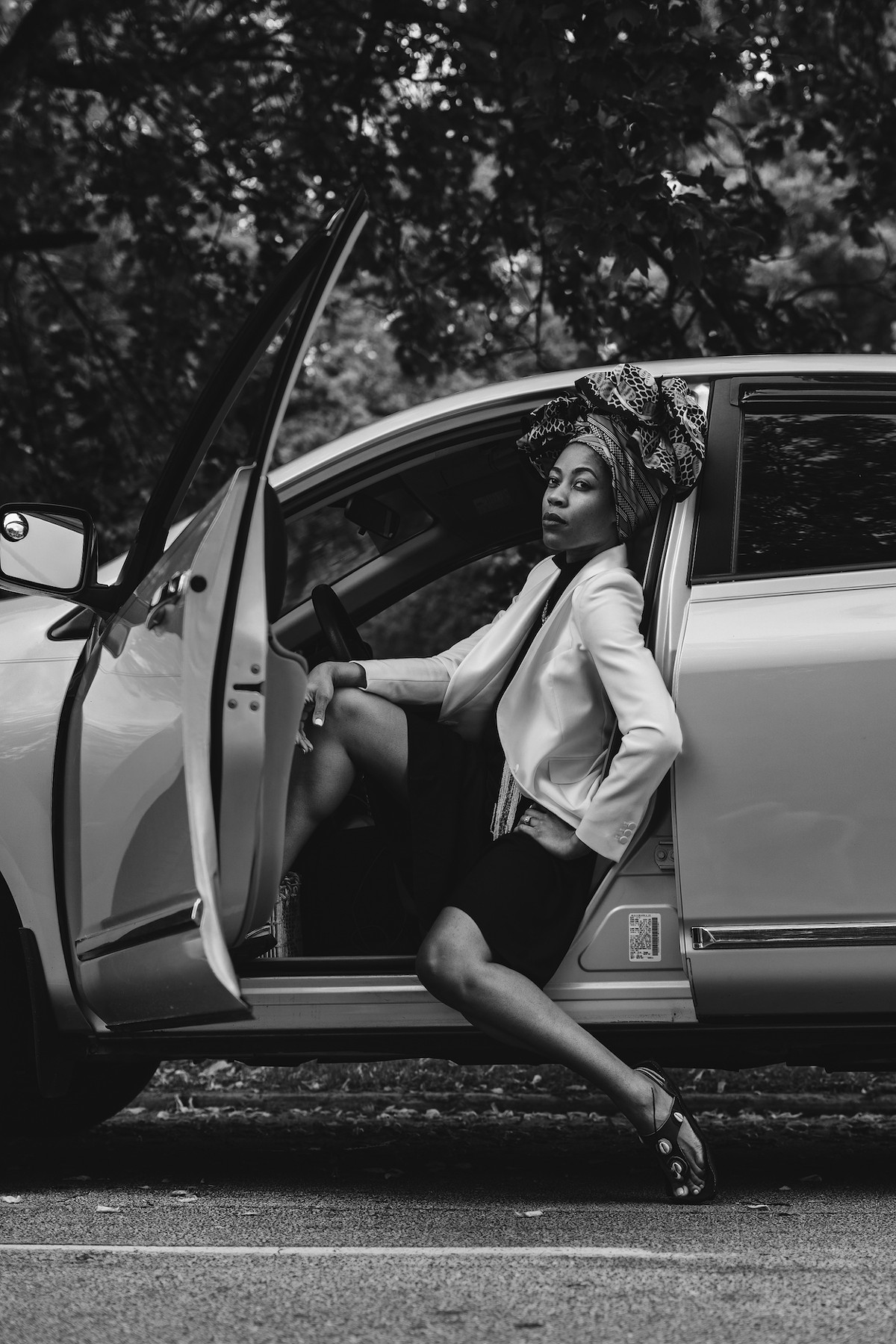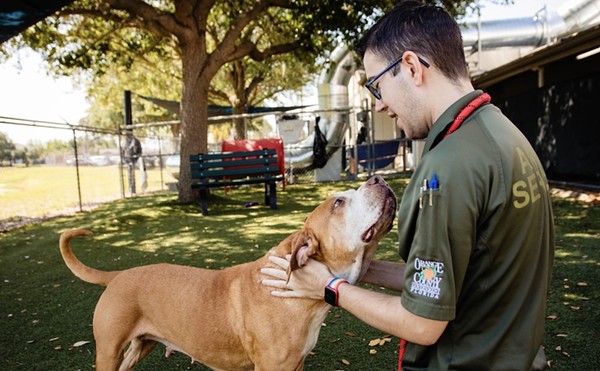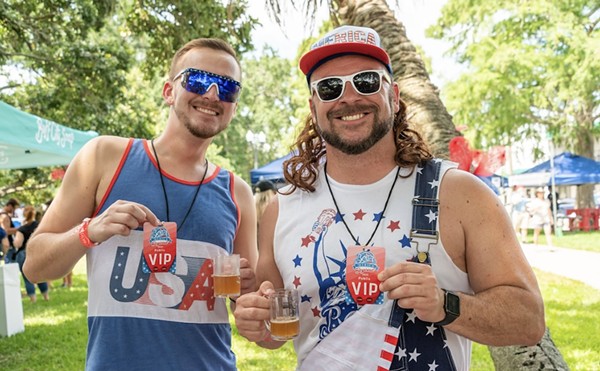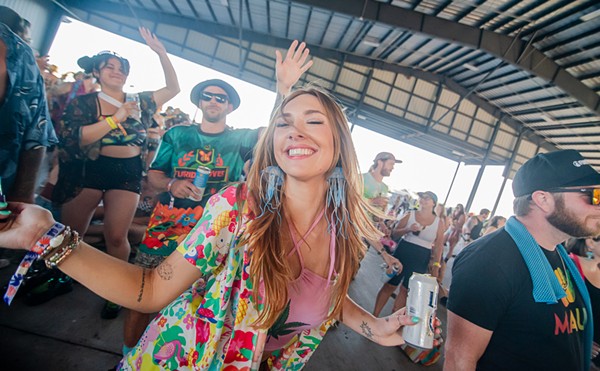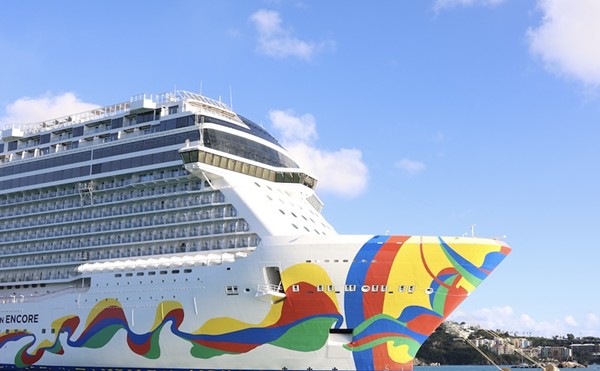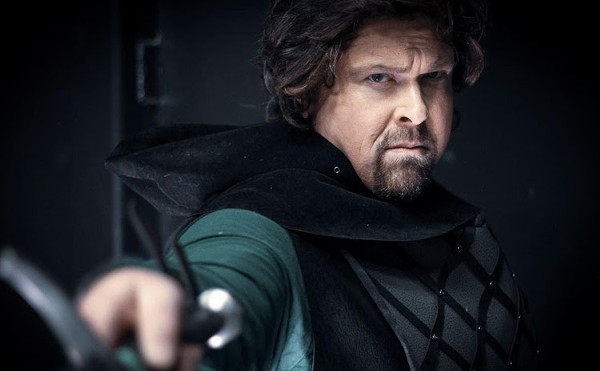As part of the partnership between the University of Central Florida and the National Endowment for the Arts, the campus is currently participating in a "Big Read" of Tayari Jones' acclaimed 2011 novel Silver Sparrow. Hailed by the Guardian as "moving, intimate and wise" and "part Bildungsroman, part homage to 1980s Atlanta," Silver Sparrow tells the story of two sisters whose lives intersect by chance after not knowing about each other's existence up to that point.
Spinning off from the Big Read and starting new interdisciplinary conversations around the ideas in Jones' novel, the UCF Art Gallery on Jan. 11 debuted the group art exhibition But Before Bone Is Skin, a mixed-media show curated by Jonell Logan. Logan, an independent curator and contemporary arts advocate who has in the past worked with the Whitney and the Metropolitan Museum of Art, currently is in North Carolina working as the Creative Director for the McColl Center for Art + Innovation. Logan showcases work from Melissa Alexander, Shanequa Gay, Yanique Norman, Sharon Norwood and Zipporah Camille Thompson to present new looks at and reflections on Jones' novel.
But Before Bone Is Skin takes themes from Silver Sparrow and offers dazzling and adventurous new visual perspectives on them. From the photography of Melissa Alexander to the installations of Sharon Norwood, the exhibit features work that, according to the gallery introduction, "defines or constructs space, questions notions of class and belonging, and the bonds, and battles of women." Logan, for her part, adds that the artists exhibiting in But Before Bone Is Skin subvert and "question definition or identity or pull together different narratives that allow us to have fuller conversations about the self."
Orlando Weekly chatted with Logan over the phone a few days after the exhibition opened about curatorial practice, collaboration and connection during a pandemic, representing Atlanta's creativity, and not being able to see your own art exhibit in person. And on that note, But Before Bone Is Skin can be viewed virtually for free, if you're not quite ready to venture out to a gallery show.
But Before Bone Is Skin, through Feb. 5, UCF Art Gallery, 12400 Aquarius Agora Drive, gallery.cah.ucf.edu, free
In what ways did this novel resonate with you personally?
What I really loved about the book is that there are so many levels and layers to it that I can relate to. It is a story of building your identity, and finding your identity when there are so many elements that are projected on you, depending on who you are, who you're related to, how people define femininity and "appropriate" behavior, and then ultimately coming to this space where you push back against those things and start to make definitions for yourself.
Would you give some insight into your curatorial process?
I wanted to read the book through, first as the work itself, to honor the writer and the writing. And then I put it down, and went back to spaces or places in the text that hit me. Even the title of the exhibition is a line from the text. So going back and pulling out spaces that spoke to me or were interesting or the way that they were worded almost created some imagery. And then I started with two artists.
Shanequa Gray, I knew that I wanted to include her work because her paintings often explore this dynamic of generations of women, and that kind of legacy that we often carry or impose on younger generations within our families, and that moment of resistance — either acceptance or resistance — that she talks about in her work. I knew that she had to be in it based on the story.
Then Melissa Alexander, who was also ... they're actually both in Atlanta. Through her photographs, she deals with this whole idea of women and identity from a different perspective. I definitely wanted them both in it.
I also wanted to honor this space of where the text comes from. It's based in Atlanta. I'm fully aware there's a specific kind of dynamic or sauce or energy that is in Atlanta, there's this creative force that's coming out of the city, so I wanted to also be aware of including women artists of color who either are in Atlanta right now, or from Atlanta, or have been based there. The other thing that I did was to have conversations with artists, to talk to them about, "Who else do you think is doing this kind of exciting work?" And Sharon Norwood came out of that conversation.
What sort of discussions did you have with the participating artists about the book?
I introduced them to the text and talked about the overarching themes. Yanique Norman was originally going to submit a different body of work but after reading the text, she created a whole new body of work for the exhibition. She was just so taken by it she wanted to create this new collection of work.
And we talked about, you know, what are some of the personal things that you connected with in the story, and even in the work that you're doing and how that is a reflection of some of these ideas. What I really enjoyed was that everyone was excited about the text and participating in that conversation through their work.
I viewed the virtual exhibition and there was such a range — fabric art and paintings and photography. Was it important for you to have different art forms represented?
I think the diversity of the way people process and create is important. ... I think oftentimes younger people are limited in their definition of what art is. And so I love to create spaces where that diversity of process is there. It also makes it really visually interesting. I often feel like when there's a theme that an exhibition is centered on, you need those different textures and colors and ways of showing work and breaking up space to tell a fuller story.
Was there a point where you knew that the story had been fully told through the art?
It's never really fully told. There's other work where you're like, "Oh, we can include this too!" And I have that habit of really packing things in. What I think happens, though, is it feels finished. It feels like a complete statement, but I think it's a space where other conversations happen that add on to the story. So it can lead to other pairings of work, or someone else's creative process.
Also I often think about audiences — this is an introduction to someone's work and it can allow you to continue the conversation by exploring their other work that's not in the exhibition. So it's never really a dead stop. But I think it's a complete space that allows for you to appreciate work, generate questions, reconsider ideas and take it all out into the world on your own to ask more questions.
Would you speak to some of the challenges you faced in curating an exhibition during a pandemic?
It was so hard! Normally, my practice is to go to each of the artists' studios to see the work that they're doing, to really have a sense of the visual and the feeling of the work, to help kind of bring things together. And that just could not happen.
It required us to rely on technology a lot more. And, you know, looking at images on a computer is not the same. But then the good thing about it was that having a relationship with some of the artists and building a relationship with others through this process, there was a level of trust with the artists that was super exciting.
In my practice I often try to work collaboratively with artists on exhibitions, because I want to ensure that we're making a cohesive statement at the end. It really is a partnership between curator and artist and so I think this — curating during a pandemic — really tested that. And I'm happy with the way that it ended up.
Were there points where you were all able to bond over the Zoom fatigue?
What's interesting is that we talked probably more than we would have if it was like, "OK, I'm going to show up in a week." But I think that really created a different process. When we didn't want to talk on the computer, we would call or text each other, which is funny because I don't know about you, but prior to this, I was super texty and not really a phone person. But all of this has changed that. So it made us communicate in a different way, which I think brought this together in a way that I'm not sure it would turn out the same had this not been a pandemic.
Is it bittersweet, not being able to see an exhibition you curated in person?
Yes. It's like when college students head out in the world and you know you can't be there with them, but you know they're going to do OK. That's what it feels like.
What do you think are the merits of viewing art virtually versus in real life, at this particular time?
This is so hard because like, on one hand, you don't have the same impact. Being in front of the thing, and wanting to touch — that's my impulse, wanting to touch the thing because you're so drawn in. But at the same time ... I think that, one, the virtual kind of engagement is important, and two, I think, the interesting moment I find that we're in is that culturally based art spaces have always depended on physical engagement. So how can we use this moment to grow and to create other opportunities? That's the way I'm trying to approach it. So for someone who can never get to Florida but is interested in this work, how do we make it so that they are just as impacted or interested or have an opportunity to explore as someone else who could potentially get there? And I think there's so much happening digitally in the art world anyway that I know some artists are thriving and those that are interested in experimentation are using this as an opportunity to do that. It's tricky.
Jonell Logan delivers a keynote address at 6 p.m. Friday, Jan. 22, and moderates a roundtable discussion with the artists at 6 p.m. Thursday, Jan. 28. These events are virtual and open to the public. More information can be found at gallery.cah.ucf.edu.

